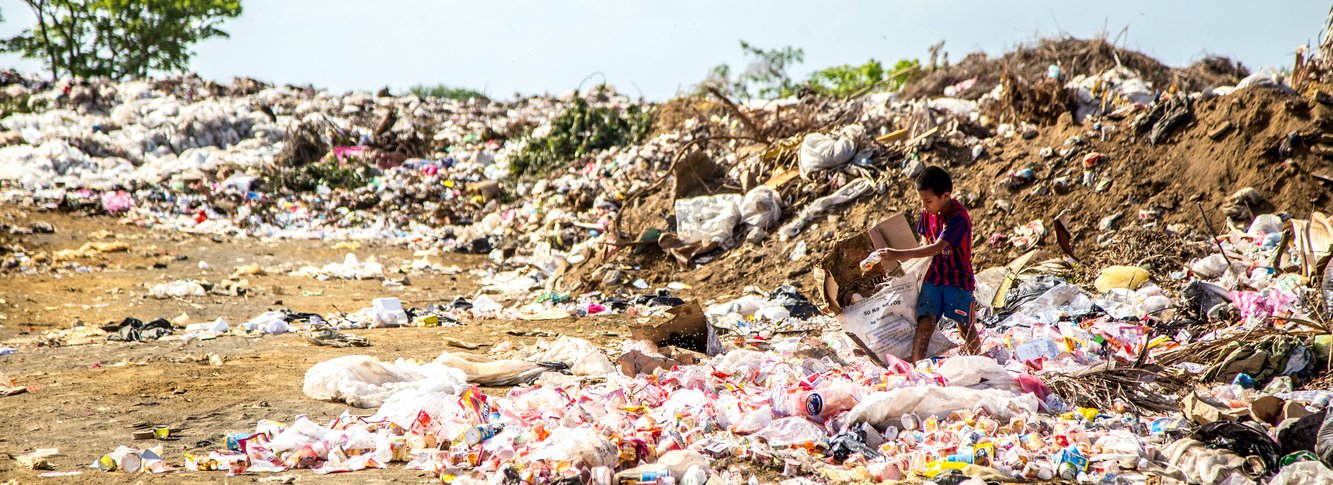| 6 mins read
“La basura es de los pobres (Rubbish belongs to the poor)!” shouted Montevidean wastepickers (known as clasificadores or classifiers) at a roadblock in the historic workers district of El Cerro in 2014. A former anarchist and meatpacker stronghold, El Cerro was home to a new recycling plant but also hundreds of informal waste pickers, many of whom had brought their horses and carts to block off the road. They were protesting about new restrictions on their right to circulate and collect waste in city, as well as new hermetically sealed recycling containers specifically designed to stop them being accessed by informal clasificadores.
Waste as an urban commons
That rubbish might belong to the poor, because they had maintained customary access to it over decades as a way of sustaining themselves in an often hostile city, was one of the claims that made me first think of waste as a possible urban commons. In the classic case of the English commons of the eighteenth and twentieth century, the right to access the fruits of variegated territories such as forests, fields, and marshes was also often claimed by a vulnerable poor.
Another factor that led me to this conceptualisation was when I observed the variety of subsistence materials that waste-pickers removed from Uruguay’s largest landfill: pallets to create fences, building materials, firewood, clothes, food for human and animal consumption, electronics, and furniture. This was, in the words of research informants, ‘the big free shop’, or more commonly, ‘the quarry’, a term that indicated the extractive relationship of waste pickers to the space.
Modern day commoning practices, from land management to the occupy movement, are often imagined as radically separate from forms of market exchange. Thus, for some, the fact that waste pickers not only common leftovers, but also commercialise discards, would preclude the categorization of the landfill as a commons. Yet the option of a complete boycott of market forms of exchange is not one that is available to most of us, and perhaps even less to the global urban poor. And while the historic English commons were mainly used for subsistence, there is also evidence of common resources being exchanged in local markets, for other goods but also for money.
The enclosure
Like the historic English commons, Montevideo’s landfill has also undergone a process of enclosure. Gone are the days of the ‘cantera libre’ (the free dump), when recent immigrants to the city, single mothers, and widows could find food, shelter, and sustenance at what they also called the ‘madre cantera’ (mother dump). From the 1980s onwards, in a process that began during Uruguay’s dictatorship, police were stationed and fences erected at the dump. Clasificadores have engaged in tit-for-tat battles in order to maintain access ever since, suffering repression at the hands of the feared mounted police.
In my book, I theorise this as a process of ‘hygienic enclosure’, justified along public health grounds that make little sense to wastepickers who value the proud autonomy and dignified life that can be made from the landfill. Not to mention, of course, the environmental and economic role that they play in saving materials from the dump and reintroducing them into national and international economies.
I have conducted intermittent research with Uruguayan wastepickers since 2010, living alongside them next to the landfill and spending my time labouring in recycling plants, landfills, and family yards. But I have also rummaged supermarket bins in Scotland alongside anarchist activists and ‘freegans’ and have observed the similarities as well as the differences between these groups. An abyss is often thought to exist between wastepickers in the Global South, driven by necessity, and those in the Global North, who are seen to have made a lifestyle choice. Yet these groups share more in common than we might imagine. Both are motivated by feelings of autonomy that sourcing at least part of one’s household subsistence for free entails. Both sustain networks of kin, friendship, and care through the recirculation and redistribution of discards. Both primarily rely on their senses to ascertain whether things are still what clasificadores call ‘sano’ or good to eat. Both are outraged by the scale of wasting that occurs and attempts to police access things that have often lost their exchange but not their use value.
Increasing dispossession
Latin America has in recent years seen increasing recognition, waste management contracts, and formal work granted to waste pickers, partly as a result of the impressive campaigning carried out by the waste picker movements and unions brought together in the Latin American and Caribbean Recyclers Movement (Red LACRE). Yet, as in Uruguay, there is a risk that privileging access to waste for the few contributes to the dispossession of a much larger group who value the autonomy of boss-less work, even in the often-exploitative conditions of the recycling industry.
The opportunity to rummage, to find sustenance in the trash, to use a horse and cart to collect waste in the city are all forms of waste work that have clashed with ideas of dignified labour and hygienic modernity. Whilst formal labour with social security can be beneficial to waste pickers, the possible installation of waste to energy plants and of being cut out of new circular economies poses a greater threat. For now, clasificadores in Montevideo and others worldwide continue to linger at the landfill commons; for how much longer they will resist, it is hard to say.
Patrick O'Hare's book "Rubbish belongs to the poor": Hygienic Enclosure and the Waste Commons, is published by Pluto Press (2022).







